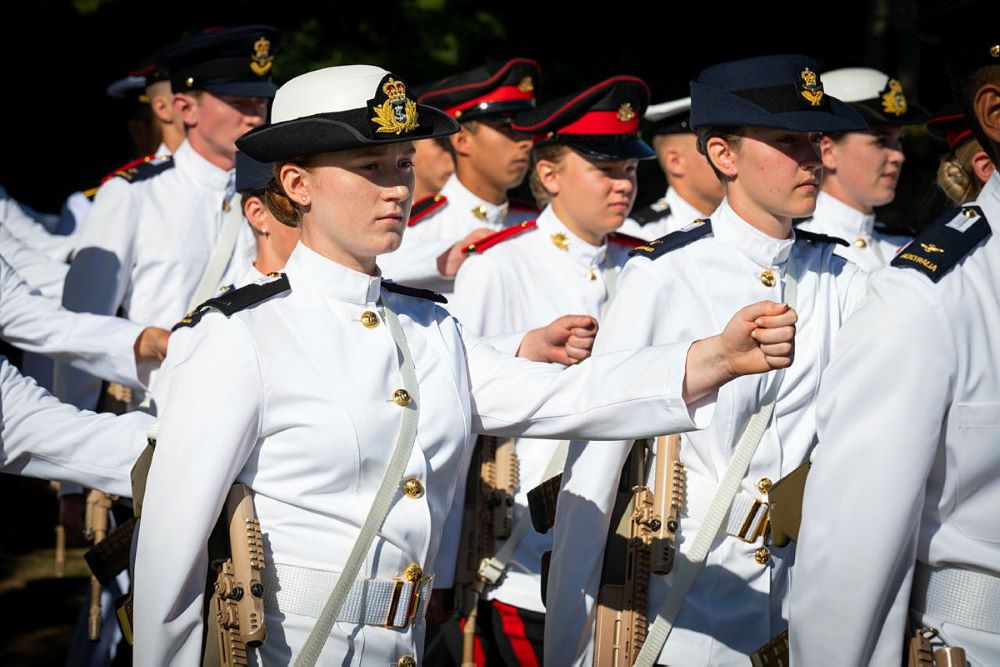
The Australian Defence Force’s recruiting problems are becoming chronic. Beyond needing to staff all the new systems coming online in the three services, current recruitment has failed to staff even the existing order of battle. With much talk of hollow formations and empty positions, the 7th Battalion Royal Australian Regiment and 1st Armoured Regiment are being merged or rerolled, but essentially an infantry and an armoured regiment will now be removed from the order of battle.
According to The Australian, HMAS Anzac has now been mothballed, because the navy is ‘so short of key personnel’. It seems incredible that these units faced no lack of funding or mandate to exist, but simply a lack of people joining the ADF. Further, as Peter Layton wrote for The Strategist recently, ‘The national defence strategy coming in 2024 is unlikely to develop the military strategy that’s required to focus the raising, training and sustaining of Australia’s armed forces.’
Finland has just 5.5 million people, but it can call up 280,000 troops in times of war, most of which are trained reserves. That’s 5% of the nation’s population. In October in response to the Hamas attacks, Israel mobilised around 500,000 troops. That’s nearly 6% of its population of 9.3 million. The ADF in comparison can reportedly field only 90,000, including reservists—or a total of 0.34% of Australia’s 26.7 million people. Finland and Israel can achieve such recruitment and readiness numbers because they have national conscription schemes.
Conscription has come somewhat back in vogue in Europe—Sweden restored conscription in 2018 and France restarted in 2024. However, these countries had only relatively recently stopped conscription, whereas Australia ended ‘national service’ more than 50 years ago. There’s also very little reason to believe that conscription would be a popular decision without a very clear and immediate threat to Australia.
However, the ADF doesn’t need universal conscription to achieve its relatively modest recruitment targets; it just needs more young people considering a career in defence.
And there is an option well short of conscription.
I propose a new approach that I’ll call the ‘opt-out system’. This system would have three steps.
In the first step, all Australians at the year 11 or 12 level would be mandated to sit an ‘Australian service questionnaire’. This digital assessment would use standard questions based on personality, IQ, values and preference. These sorts of questionnaires have been used in recruiting across industries and defence forces for decades. Young people even sometimes seek these types of assessments from a psychologist to help them decide what they may be good at for a future career. The answers to these questions provide an initial assessment of the young person’s aptitude for roles in the ADF.
In the second step, the young person would be made an ‘offer’ of four or five suitable roles on a digital form. Next to each role’s description and salary there could also be a link to a short video of someone who has been in that role for 12 months, explaining what to expect on an average day. Below the full-time positions, the question, ‘Are you interested in part-time work?’ could be presented, with the options for jobs with the local reserve unit. The young person can then tick which roles are of further interest to them—or at the bottom of the form can select ‘opt out’ for no further involvement in the initiative. (Other defence civil service jobs and, at local state level, the police could eventually be incorporated into the offer.)
In the final step, if the young person reacted positively to one of the roles in the offer, a date would automatically be booked for their medical, psychological and physical testing. The standard ADF recruitment process would be implemented from that point, with a start date for the person’s service recruit course provided on completion of testing.
There could be other times in an Australian citizen’s life that the Australian service questionnaire could be mandated—for example, at the completion of a university or TAFE qualification, when that person may be looking for options.
There will be a proportion of people who deliberately do poorly or refuse to answer the questionnaire—but they were never going to take a role in or be interested in the ADF anyway. The new system would also require legislation to mandate the questionnaire, but it could be presented as an initial trial for three years. That would give enough time not just to see what impact it has on defence recruiting numbers, but also to allow students in lower year levels to see their seniors take part in the initiative and get used to the idea. By the third year there should be a clear indication of whether the system is working.
This opt-out system would result in all Australian young people, of all backgrounds, considering a career with the ADF, without resorting to a more heavy-handed approach like conscription. There will be a natural curiosity to see what the offer might be, and the need to opt out would force all young people, from all walks of life, to at least consider their options. It would surely result in a larger pool of recruits to not only keep units and capabilities alive, but also allow for ADF expansion in an uncertain time.

